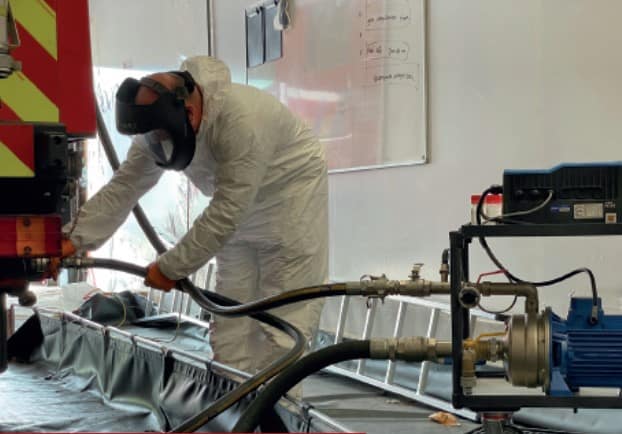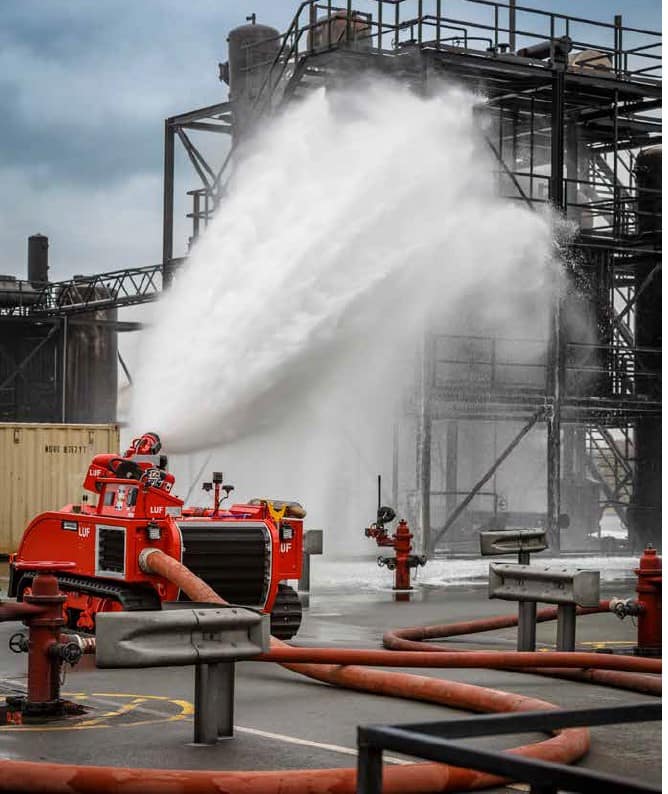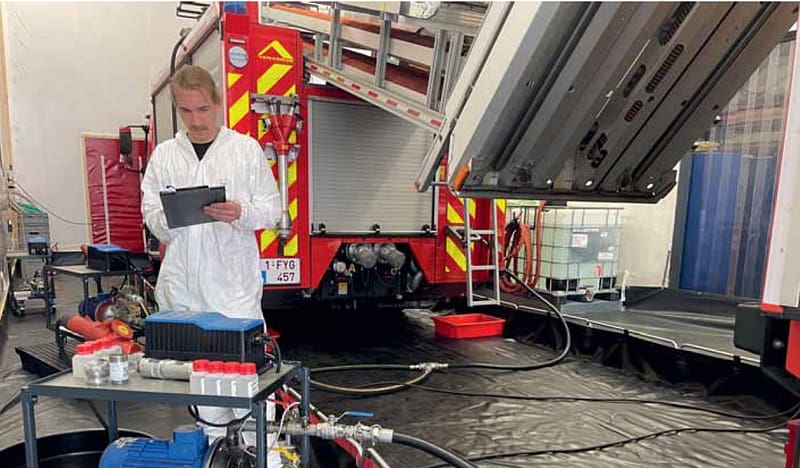Safe and effective PFAS removal from firefighting systems

Public and private fire services, as well as industrial and
logistics (storage) companies, frequently use fluorinated
foam for effective incident response.
Safe and sustainable transition to PFAS-free extinguishing foam
Fluorinated extinguishing foam has been an indispensable tool for fire
services, industrial companies, the military and airports for many years. The high effectiveness in fighting fires was largely due to the presence of per- and polyfluoroalkyl substances (PFAS) in the extinguishing foam. However, it has now become clear that PFAS has harmful long-term effects on humans and the environment. This is why the European Commission has set the goal of
reducing all emissions of hazardous substances into water and soil to levels that no longer harm public health and the environment by 2050. This ban
applies not only to the emissions of PFAS, but also to their use, including in
fluorinated extinguishing foams.
PFAS verwijderen uit blussystemen

Publieke en private brandweerdiensten, industriële en logistieke (opslag)bedrijven maken veelvuldig gebruik van fluorhoudend blusschuim voor effectieve incidentenrespons.
Safe and effective PFAS removal from firefighting systems now guaranteed and certified

Public and private fire services, as well as industrial and logistics (storage) companies, frequently use fluorinated foam for effective incident response.
This foam is stored in foam tanks, both in vehicles and in fixed firefighting systems. PFAS (polyand perfluoroalkyl substances) in this foam have
adverse long-term effects on human health and the environment.
Certificate ensures quality and prevents health damage and environmental violations in PFAS cleaning

“Workplace accidents, health damage, and environmental violations at tank cleaning companies.” In September 2024,
the Dutch newspaper NRC reported on issues in the world of tank cleaning. Tank cleaning is necessary not only for
tanks containing hazardous substances but also for tanks with foam-forming agents. The world is in the midst of a foam
transition: the current fluorine-containing firefighting foam is being replaced by a new, fluorine-free variant. Preventing
contamination of the new fluorine-free foam with residual PFAS is crucial. This can be achieved through high-quality
cleaning. Delivering quality and preventing health and environmental damage are key objectives of the cleaning process.
These objectives are now secured in an assessment guideline. This guideline has been developed in the Netherlands, with
support from industry, service providers, and regulators, but is applicable worldwide.
Gebruikte de brandweer PFAS-schuim bij schuimparty’s? VRZ denkt van niet, maar weet het eigenlijk niet.

Heeft de brandweer tien jaar geleden bij schuimparty’s op verschillende plekken in Zeeland PFAS-houdend blusschuim gebruikt? De Veiligheidsregio Zeeland (VRZ) geeft aan dat betrokkenen zeggen van niet. Maar de VRZ weet het niet zeker omdat er geen registratie van het gebruik van het schuim is geweest tot 2022.
Once is enough for a foam transition

David Pronk en Kees Kappetijn of Kappetijn Safety Specialists develop an Assessment Guideline for cleaning of foam systems and foam tenders
Once is enough for a foam transition
David Pronk and Kees Kappetijn of Kappetijn Safety Specialists develop an Assessment Guideline for cleaning of foam systems and foam tenders
The new foam campus by RelyOn Nutec Fire Academy

Across the world, the foam transition is now in full swing and many organizations have already begun this transition. Along the way, organizations are finding that this transition goes far beyond simply replacing foam concentrate with fluorine-free foam concentrate and that there be many technical aspects on top of foam performance and capability need to be addressed.
Beoordelingsrichtlijn PFAS-reiniging

Momenteel wordt een schuimtransitie uitgevoerd: het huidige, fluorhoudend blusschuim wordt vervangen
voor een nieuwe, fluorvrije variant. Contaminatie van nieuw fluorvrij schuim met achtergebleven PFAS moet
daarbij voorkomen worden. Dit kan door middel van hoogwaardige reiniging. De kwaliteit van zo’n reinigingsproces
kan nu worden geborgd met een beoordelingsrichtlijn (BRL).